As a sensitive soul who deeply feels every suffering I ever learn about, I could never choose just one social issue to fully commit myself to. It was always “all the issues!” that tore at my heart. From a young age, I wanted to know how to fix everything from human prejudice to animal cruelty to littering. When I first heard the concept of Tikkun Olam — repair the world — I thought, “Yes, that’s it! That’s what I want to do!” But how?
The Call for Humane Education
In my early thirties, after stints in print journalism and academia, I discovered the field of humane education — teaching how to solve problems for people, animals, and the planet. And I felt the same feeling: “Yes, that’s it!” It was all connected and it all mattered to me. I wanted to work in that intersection. When I first heard that ancient Jewish call to repair the world, humane education felt like a calling for me, too.
I trained with The Institute for Humane Education and worked for a time as a humane educator in elementary schools for the non-profit, HEART.
But writing has always been my core strength and most effective means of reaching others. Plus, I have a chronic illness that made it tough to travel from school to school. So, in 2017, I left the classrooms and threw myself completely into teaching humane education (and repairing the world) through my writing.
Children’s Books as Teaching Tools
From using nonfiction picture books in elementary schools and in my own home, I knew that they are amazing teaching tools. In the 2000s, this genre of children’s literature began to undergo a renaissance — evolving from the dry, encyclopedic nonfiction books many of us grew up with to creative, powerful, gorgeous books that move children (and their grownups) emotionally with true stories and compelling facts.
As a humane educator, I’d created a tradition with students where, at the end of each lesson, I would read them one of these new-generation nonfiction books — beautiful stories about famous people like Jane Goodall, Gandhi, and MLK, as well as non-famous folks repairing the world in their own ways. Inhumane education, we talk about raising “solutionaries,” so I called this Solutionary Story Time. With every book, the kids excitedly discussed what these extraordinary and ordinary people did, how they did it, and how we might do similar things.
Their enthusiasm helped me decide to write my own Solutionary Stories — nonfiction picture books about helping people, animals, and the planet.
Multiple Topics, Same Heart
Writing children’s books isn’t as simple as most people think. It’s a craft that takes training and practice. And so, as I’d done with journalism, academic writing, and essay writing before, I dove into learning the craft. I took workshops, attended conferences, and wrote many, many drafts. Eventually, I landed my first literary agent and trade publisher, and today I have a whole collection of award-winning Solutionary Stories — nonfiction picture books that I love to share with kids.
My first book, which came out in 2019, was about two of my longtime favorite solutionaries, Anne Frank and Miep Gies (the woman who hid the Frank family and rescued Anne’s diary). I’d had the honor of meeting Miep while writing a newspaper story on her visit with schoolchildren near Washington, D.C. She embodied the solutionary spirit, as did Anne Frank (whose diary I read countless times as a girl), so it was the perfect book for me to begin with.
Since then, I’ve written nonfiction picture books about other solutionaries helping people — such as Helen Keller and, coming next year, Senator Sarah McBride — as well as early readers about famous solutionaries including John Lewis and Nelson Mandela. My other books highlight solutionaries for animals and the planet — such as folks building wildlife crossings (including one inspired by the famous “Hollywood cougar” in Los Angeles), tracking monarch butterflies, and cleaning up the oceans.
Every book has back matter that includes action steps kids can take to help, and I offer free, downloadable teaching guides with more activities. For parents and educators, I also curate a categorized collection of other authors’ Solutionary Stories, so they can find many books to do their own Solutionary Story Times. (All linked on my website.)
If someone were to look at my collection of books in the library, the theme tying them together might not be immediately obvious. (Anne Frank and a Hollywood cougar?) The topics spread across various social and environmental issues. But when I explain that they’re all about solutionaries helping people, animals, and the planet — or, for my Jewish readers, about tikkun olam — I often get that familiar nod of recognition: “Yes, that’s it!”
Meeg Pincus is the author of nonfiction picture books about “solutionaries” who help people, animals, and the planet — including Winged Wonders, Cougar Crossing, Ocean Soup, Miep and the Most Famous Diary, Make Way for Animals!, So Much More to Helen!, Door by Door, and 17 early readers. Her books have received numerous awards (The Cook Prize, The Sigurd Olson Nature Writing Award, and Golden Kite, Eureka!, and Green Earth Books Honor Awards), starred reviews (Kirkus, Booklist, School Library Journal), and spots on best book lists (NCTE, NSTA, Bank Street College, Kirkus, A Mighty Girl). She grew up and lives with her family in Southern California and can be found online at www.MeegPincus.com.

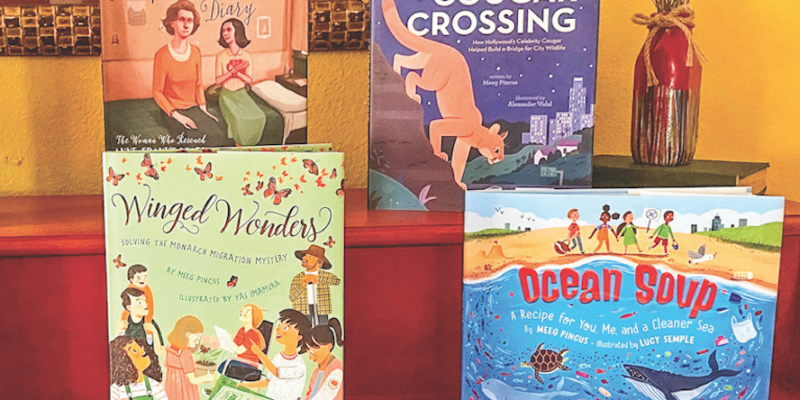
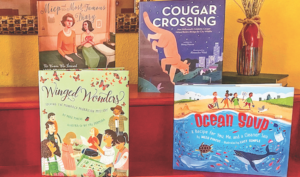




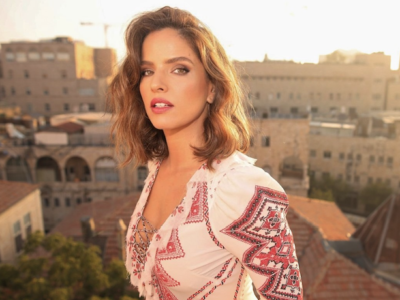
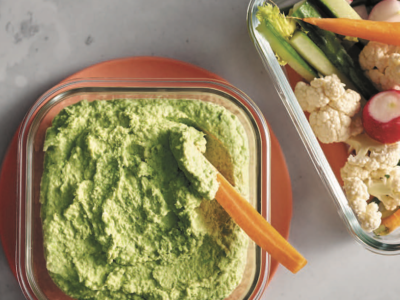
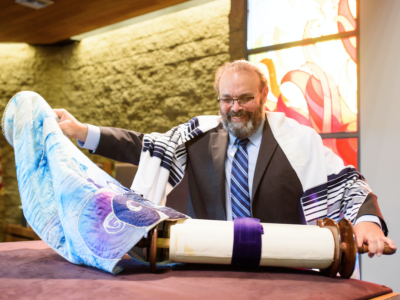
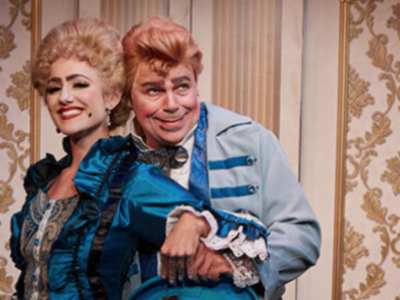
Comments